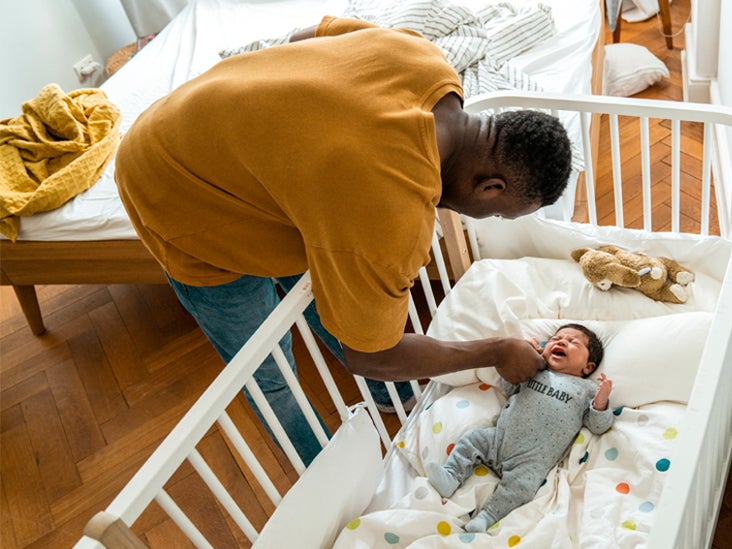
Functional overstrain of the vocal cords of the baby, when he screams because he is hungry, he is uncomfortable, cold, damp. Acquired meningitis or encephalitis, when the hoarseness of the baby's voice is caused both by the disease and the overstrain of the vocal cords from crying, crying. The hoarse voice of a child is just one of the symptoms, with genetic distortions there are more characteristic signs of the mentioned syndromes Syndromes associated with hereditary chromosomal disorders - Down syndrome, Williams, Pfeiffer. Diagnosed only in the complex - the classic signs of the disease and genetic research Syndrome "cat's scream", congenital, chromosome disorder, which, fortunately, is rare. Congenital, functional and acquired abnormalities of the vocal apparatus: A hoarse voice in very young children, newborns. Let's consider the reasons more in detail, we will try to answer a question - why the child has hoarse voice. Why does a child with a hoarse voice find out only a specialist, a doctor, like no other, knows that the causes of dysphonia can be due to age, situational cause or disease. Diseases associated with impaired endocrine function. Age, physiological weakness of the vocal cords. Psychogenic causes - stress, fear, severe shock. Diseases of viral, inflammatory etiology. Overexertion of the vocal apparatus, when the child speaks loudly and loudly, screams In otorhinolaryngology, there is a classification of dysphonia according to etiological signs, by types: In order to find out why the child has a hoarse voice, it is necessary to consult a doctor, as a rule, these questions are initially dealt with by a pediatrician who can refer the baby to an ENT doctor (otorhinolaryngologist). Virtually all violations of the voice process, throat diseases, are treated by a doctor of a narrow profile - an otorhinolaryngologist. Among the causes of hoarseness symptoms, acute laryngitis is leading, followed by laryngotracheitis with signs of stenosis, in third place - functional ligament congestion and mutation in the pubertal period (boys), the list is completed - chronic laryngitis and congenital abnormalities of the vocal apparatus, including papillomatosis, paresis, cicatricial stenosis. Physical overstrain of ligaments in "home" children is less common than in preschool children attending kindergartens. Dysphonia, hoarseness of voice, not associated with the etiology of viral nature, are statistically "tied" to pre-school and school institutions. The cases of parainfluenza diagnosis in autumn are associated with type 1 and 2 viruses, the "spring" ARVI is characterized by the detection of type 3 virus. Most children get sick in the cold season, however, outbreaks of mass infection can be sporadic (sudden, without obvious reasons). The prevalence of the symptom "hoarse voice in a child" is due to seasonality. Breasts up to 4-5 months suffer from acute respiratory viral infections very rarely. Children taking artificial food are at risk of infection. 
Breastfed babies have specific immune protection under the condition of breastfeeding. Children aged one to five years are most vulnerable.Transmission of the virus is carried out by standard - airborne method.If the carrier of infection suffers from acute respiratory viral infection without catarrhal symptoms, it is relatively epidemiologically safe for others.The causative agent of infectious inflammation is allocated from 7 to 10 days, possibly recurrence and re-infection, in which the isolation of the infectious agent (virus) is reduced to 3-4 days.

It is no accident that ARVIs are so common in children's institutions, one kid can infect with a dozen others, especially if the infection is in a catarrhal form (cattle - catarrhal-respiratory syndrome). The carrier of the infection, as a rule, is already a sick person.Such a stenosing form of inflammation requires immediate medical attention.Įpidemiology of the causes with which dysphonia is associated, hoarseness: The most dangerous form of laryngitis, when the mucous tissue of the larynx swells and narrows, except that parents notice - hoarse voice in the child, the baby breathes with difficulty, swallows food, and sometimes liquid.

In general, in pediatric practice, it is believed that almost all the inflammation of the vocal chord zone is laryngitis, as a specific type of acute respiratory viral infections (ARVI). Less commonly, laryngitis is due to voice overload, a physical factor. The inflammatory process develops in the child's larynx, the background of inflammation can be primary infectious, cold diseases. More often hoarseness is caused by a laryngitis, its various forms. The epidemiology of diseases that provoke the symptom of "hoarse voice in a child", directly depends on a specific diagnosis.







 0 kommentar(er)
0 kommentar(er)
